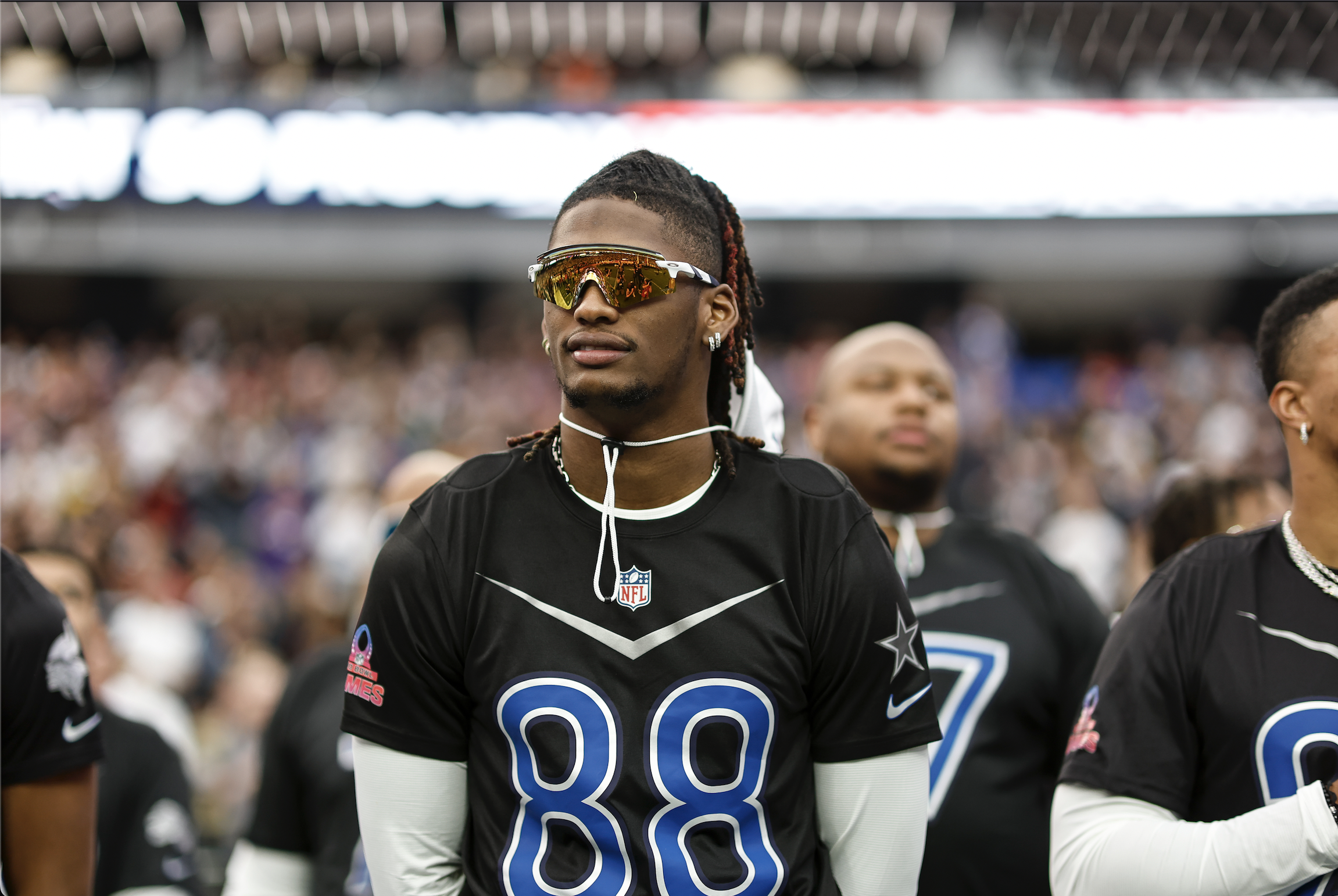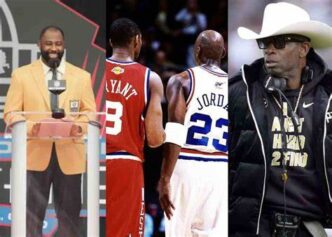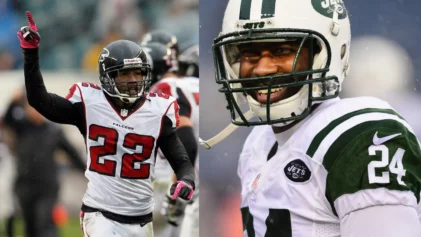Remember back when Richard Sherman first started talking about being the best cornerback in the National Football League? Before the Super Bowl victory over the Denver Broncos, before the media campaign against his boisterous intelligence and negritude, Sherman was telling people that he was the best at his position, and he was telling other cornerbacks that too.
At the time, the man who was still widely recognized as the best in the game was toiling his wares in relative obscurity with the New York Jets and Tampa Bay Buccaneers. That mans name is Darrelle Revis. Prior to the emergence of Sherman, Revis was tabbed as the next greatest cover corner of this era, with some even saying he was better than former NFL great Deion Prime Time Sanders. Yes, sacrilege for many to be certain. But there were many proponents to this line of thinking back before Revis suffered what many considered to be a career-threatening knee injury.
They say that opportunity favors the prepared and it seemed as if Richard Sherman was more than prepared to step forward and snatch the proverbial belt. But nobody told Revis that he was supposed to just fade away like an old soldier from a war that had long since been won. He worked hard, got back into shape and, while Sherman was still doing his thing, Revis simply remained quiet and got back into Pro Bowl form.
How karmic is it that these two men will now vie for a Super Bowl ring on the very same field? Indeed, the universe gives us what we want if we want it bad enough.
Richard Sherman is only at the dawn of his greatness at 26 years old, while Revis has at least five productive years left at 29-years-old. A Super Bowl championship would be the crowning achievement on a career that many believe will lead him to Canton and the Pro Football Hall of Fame.
Though there are fans and vilifiers of both these athletes, it is very difficult to choose who is better than the other beyond a shadow of a doubt. However, we will attempt to do so.
Effectiveness within Scheme:
One of the very first things that stand out in comparing the two is Shermans positioning in the Seattle Seahawks secondary. He almost exclusively lines up on the left side week after week; according to ESPN.com, Sherman lines up there 91.3 percent of the time. However, thats not as big a knock as most naysayers make it out to be. Sherman doesnt decide where he lines up in the Seattle defensive scheme. That designation goes to defensive coordinator Dan Quinn. On the other hand, “Revis Island” has been a phrase used to describe the manner in which Darrelle can be placed on just any wide receiver almost anywhere on the field and completely remove him from his teams offensive game plan.
“We play the game two different ways,” Sherman said last Wednesday. “He plays it more, I guess, meticulous. More conventional. People say his technique is a little more conventional and mine is more unorthodox, which means it’s more difficulty to replicate what I do on the football field. So everybody is going to make comparisons, but it’s two different styles to compare. I play my way, he plays his way, and both of them are effective.”
Though their respective methodologies may differ, one cannot dispute the evidence that lies within the numbers.
Tackling:
Richard Sherman
(2012) 64 tackles, 8 interceptions
(2013) 48 tackles, 8 interceptions
(2014) 57 tackles, 4 interceptions.
Though Shermans regular season interception numbers are down by 50 percent from the two previous seasons, it isnt far fetched to say that phenomenon is due in large part to some coaches conceding the left side of the field to Sherman rather than forcing a pass to a blanketed receiver and have it intercepted.
Here are the stats for Darrelle Revis over the same time frame. However, we will substitute the stats from his injured season with the New York Jets in 2012 with his stats from 2011.
(2011) 52 tackles, 4 interceptions
(2013) 50 tackles, 2 interceptions
(2014) 47 tackles, 2 interceptions
Ball-hawking:
At a cursory glance, it would seem as if Richard Shermans ball-hawking abilities are far and away superior to those of Revis. Especially when considering Sherman has two seasons in which he intercepted 8 passes, Revis has only one season in which he intercepted as many as 6.
However, one must also consider that Revis abilities are used to eliminate certain receivers in certain situations. A signal caller has the ability simply audible to another play or check down to another receiver if hes not comfortable with the match-up against Revis.
But it is far more difficult for an offense to advance without using a third of the field for an entire game. Thus, sooner or later, quarterbacks and offensive coordinators will be forced to try the left side out of necessity and offensive continuity whereas an offense that is advancing the ball proficiently would see no need to pass the ball to the man Revis is guarding unless it is absolutely necessary.
We must also consider that Richard Sherman is part of a secondary that many are calling one of the best in the last decade with SS Kam Chancellor and FS Earl Thomas. In those instances in which the Seattle defense is clicking on all cylinders and a team is unable to get any passes downfield, it then becomes necessary to try to pass the ball to Shermans man as sort of a Oh what the hell kind of last resort.
Similarly, if Revis is covering a favorite target of an opposing quarterback, and a team is in a situation where they have to start force feeding The Man in their receiving corps, they will have to test Revis. It is those instances that both men relish and have come up with big plays more often than not.
But it speaks volumes when an opposing team has to scheme against one individual player, a la Lawrence Taylor, Ray Lewis and the aforementioned Deion Sanders.
Though it is difficult to quantify anything based on the eye test, Revis is stockier (60, 205 pounds) than Sherman (63, 195 pounds) thus it would stand to reason that his lower center of gravity would translate into harder hits. However, unlike other cornerbacks with comparable physiques, Sherman has never shied away from tackling anyone. That being said, if a player is given a choice, theyd probably prefer to get his by the player that weighs ten pounds less if all other things are equal.
Natural Ability:
Sherman is longer and leaner than Revis and thus is able to get his hands on more passes. On the other hand, Revis is faster in a flat out sprint than Sherman (4.38 to 4.56). But that speed difference is negligible when considering Shermans height and length advantage. Their respective tackling numbers over the past three seasons are very close as well. Both are fine tacklers who rarely launch themselves or are called for pass interference. But, perhaps due to miscommunication or ineptitude, Sherman seems more likely to give up the big play than Revis. Because of their respective schemes (Sherman in a Cover Three and Revis being used more man to man), Sherman has to always account for the position different offensive players relative to his position on the field whereas Revis can simply play his man and rely on his ability and instincts.
Richard Sherman was penalized three times for 28 yards. Two of which were against the Dallas Cowboys and their stud receiver Dez Bryant (tripping and defensive pass interference) and the other was against the San Francisco 49ers and arch nemesis WR Michael Crabtree. Revis has been penalized four times for 35 yards this season (defensive holding, defensive pass interference), but was penalized six times overall though the others were offset or declined.
By contrast, a comparable cornerback like Arizona Cardinals Patrick Peterson was flagged 10 times for 98 yards in 2014 for defensive pass interference, illegal use of hands, and defensive holding, and teammate CB Antonio Cromartie was flagged five times for 42 yards last year as well.
Conclusion: Richard Sherman
Though he isnt far and away a better cornerback than Darrelle Revis, Richard Shermans total number of tackles, total number of interceptions and the scheme in which he plays all contribute to him being the best cornerback in the game. Revis might be faster, but not fast enough to grow three inches at a critical moment. I would be negligent if I didn’t mention the fact that Sherman looks back at the quarterback a lot, a cardinal sin for any cornerback. However, he’s agile and athletic enough to get away with it. If I had to chose between the two, and I do for the purposes of this article, I’d pick Sherman.



